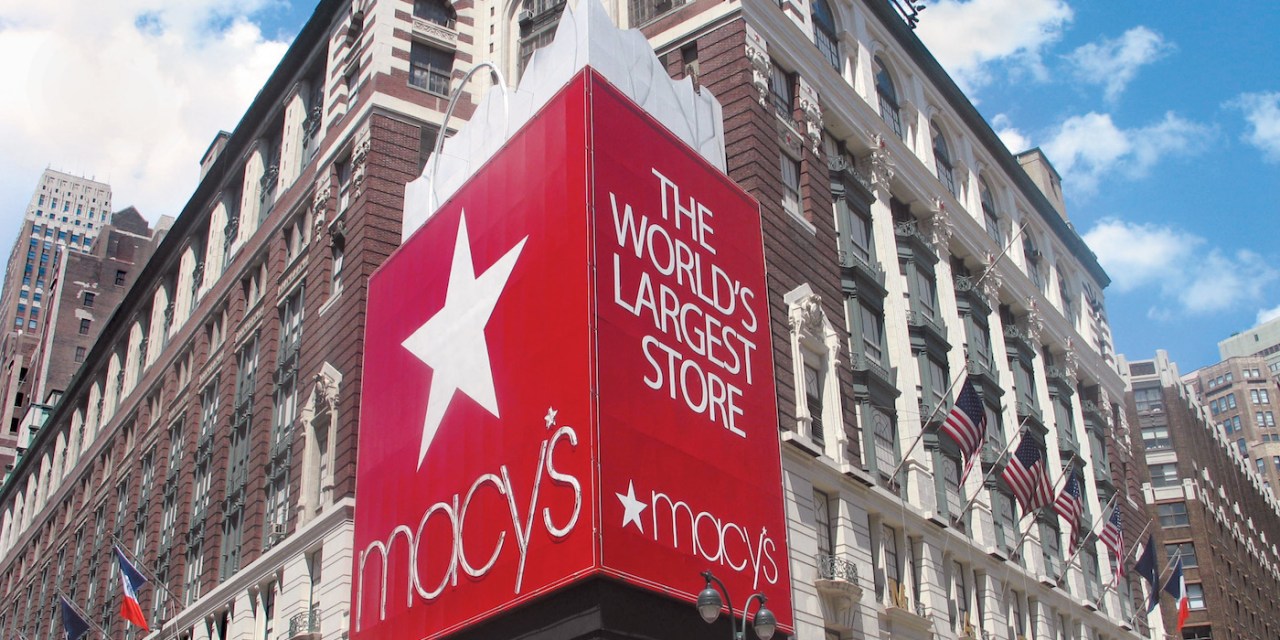Why Macy’s is testing free same-day delivery

Big-box retailers Walmart and Target have been among the most aggressive in adding a variety of delivery options to match consumer expectations that have been set by Amazon. But now, with the holiday season approaching, department stores are also taking more aggressive steps to prove to shoppers that they too can win on fast delivery.
Last week, Macy’s announced that it will be testing free same-day delivery in select markets. Starting on October 1, free same-day delivery will be available on orders of $75 or more in 30 markets. Normally, Macy’s charges an $8 fee on same-day delivery. Macy’s is partnering with Deliv to fulfill same-day orders.
Macy’s didn’t say exactly when the free same-day delivery pilot will end. But Andrew Lipsman, an e-commerce analyst for eMarketer, sees it as a temporary play to win over holiday shoppers.
“The holiday season is make or break for everyone, and it may especially be so for a department store like Macy’s,” Lipsman said. He added that the closer shoppers get to Christmas, the less certain they are that anything they order online will get there in time. “So the retailers who are in the best position to still deliver on that promise are going to be the ones who are favored,” Lipsman said. Macy’s reported same-store sales growth of just 1.1% last year during November and December, one of its weakest holiday earnings reports in years.
Meanwhile, competitor Nordstrom has opened two of its local stores — which serve as hubs for online order pickup — in New York City this month. New York City is Nordstrom’s biggest market for online orders. And in Los Angeles, its biggest market, the amount of inventory available for next-day delivery has increased by 7x over the last year, Erik Nordstrom said during the company’s second-quarter earnings call. Kohl’s has been pushing for more of its customers to adopt buy online, pickup in-store, and buy online, ship from store. CEO Michelle Gass said during the company’s last earnings call that 40% of digital orders were fulfilled by stores.
While the strongest use case for same-day delivery has historically been for perishable items like groceries, Amazon has pushed every brick-and-mortar retailers to offer faster delivery.
“If you are a consumer, and you are used to ordering everything from Amazon, then it would seem weird that you couldn’t get things very quickly from other retailers like Macy’s, even though they are in different product categories,” said Jason Goldberg, chief commerce officer at Publicis.
Additionally, big-box retailers like Target and Walmart are stealing more shoppers away from department stores, and making bigger pushes into apparel. So department stores also risk losing the customer who has grown so accustomed to getting their groceries or cleaning supplies delivered the same day from Target, that they also decide to tack on an order for kitchen supplies or apparel that they may have previously placed through a department store.
Macy’s has been offering same-day delivery since 2014 through Deliv. Macy’s does not break out how many of the customers who are eligible for same-day delivery choose it as a fulfillment option. Evan Mack, a research associate for Gartner L2, noted that Macy’s has in recent years promoted same-day fulfillment more frequently on its website, and now offers customers the ability to filter by products that are available for same-day delivery or in-store pickup that day.
But, getting customers to choose Macy’s over competitors by offering faster delivery options is only half the battle. Macy’s also has to figure out how to do it cost-effectively. Macy’s chief financial officer Paula Price has said that Macy’s was able to offset increased delivery costs in 2018 by improving margins on its merchandising. But it may not be able to do that forever.
Even though Macy’s has dropped the $8 delivery fee, Lipsman believes that a $75 minimum order threshold may be enough to put Macy’s in a sufficient position to offset some of the costs.
“This is where the market is going, so the better that any retailer gets to providing that sort of immediacy, the better they’re going to get at navigating the transition,” Lipsman said.

